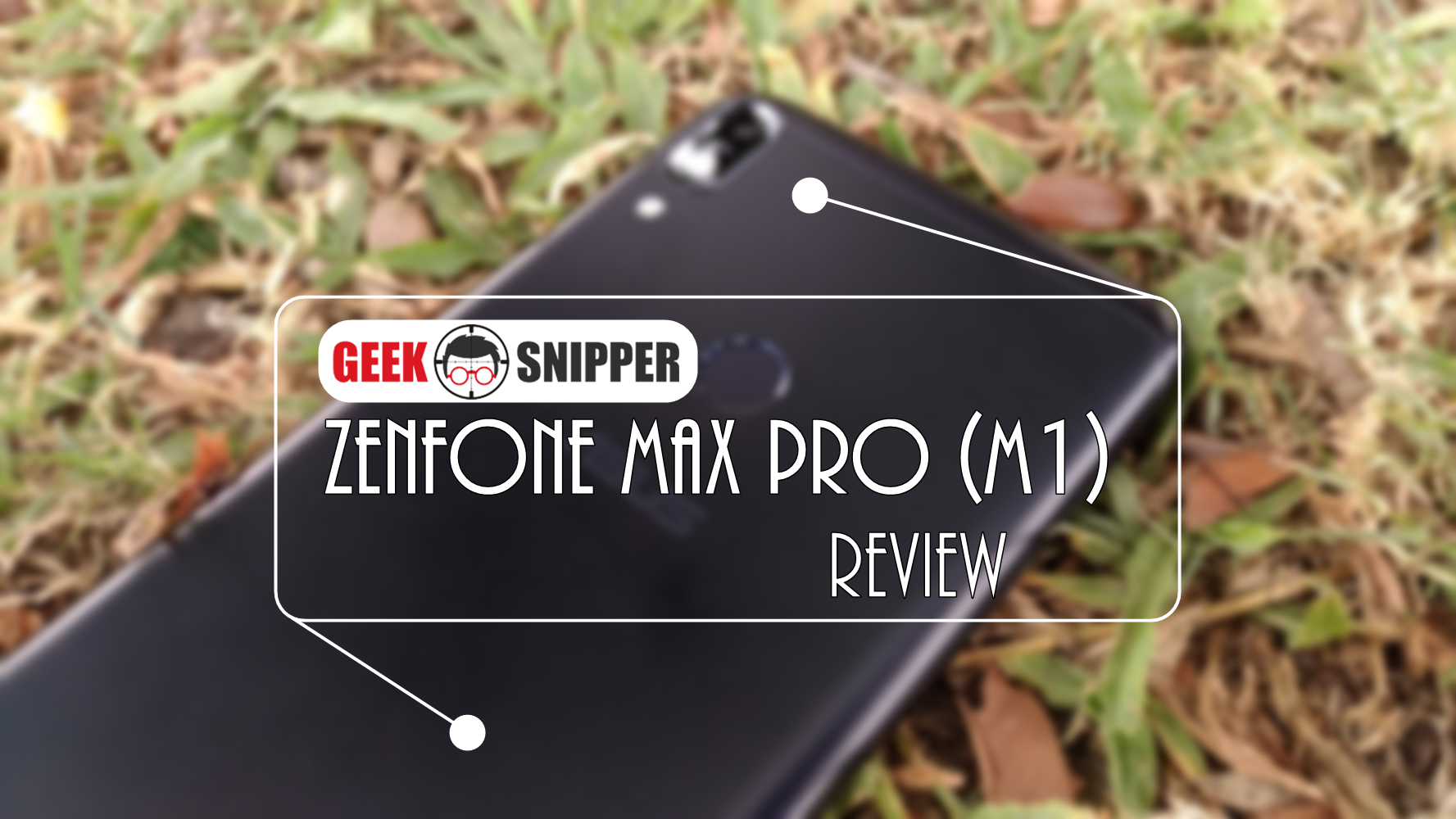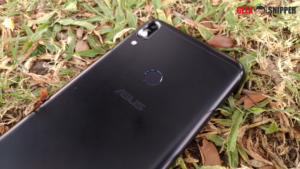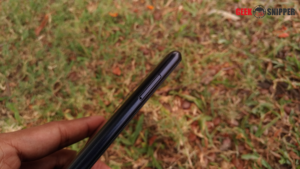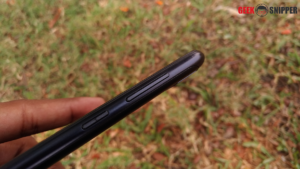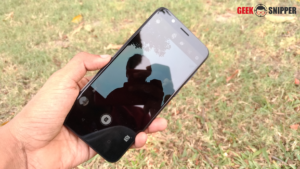ASUS Zenfone Max Pro (M1) Review – Bang On Budget!
After a couple of generations of highly priced Zenfones, the Zenfone 5 series came into focus & this time they were price pretty competitively. Though, ASUS hasn’t been able to launch the device here in India yet, ASUS has actually launched another smartphone targeted towards the budget segment customers in India. Yes, I am indeed talking about the ASUS Zenfone Max Pro (M1) Review which has been launched at an excellent price with remarkable hardware.
I have spent a couple of weeks with the ASUS Zenfone Max Pro (M1) I have a very good idea of how much capable the device actually is. So, this my full review that’ll help you to decide if the ASUS Zenfone Max Pro (M1) is for you or not.
The Design & Build Quality
ASUS has used a a traditional Glass & Metal construction for the Zenfone Max Pro (M1) so, that’s what you’d generally expect from a budget smartphone & ASUS is no exception here. The good thing is the construction doesn’t feel cheap. The in-hand feel is nice & the device feels solid overall.
In the front there is a 2.5D Glass covering the Display, on which the company hasn’t specified any kind of branding so, it’s probably not from Corning. However, the Glass isn’t super durable against micro scratches, so, if you’re getting the device, you should also get a tempered glass for it. However, it does look good with a reflective finish.
The Dual Camera setup on the back is protected by Glass & the anodized Black color looks good & at the same time attracts smudges & fingerprints at the same time. ASUS doesn’t include a case so, in case you need that, you have to supply your own.
Overall, I wil say the design is kinda eye catchy but, I don’t think that there was a need for that “Dual Camera” text between the Camera lenses. The build quality is quite good.
The Display
The Display is a 5.99 inch Full HD IPS Panel with an aspect ratio of 18:9 so, that means the resolution is 2160×1080. ASUS has previously launched an 18:9 device under the Zenfone Max Series which was the Zenfone Max Plus (M1) but, it never made it’s way to India so, the Zenfone Max Pro (M1) is the first ASUS device to make it’s way to the Indian market with an 18:9 Display and it is actually a good one.
We are seeing a lot of 18:9 budget Displays now but, most of them including the one on the Redmi Note 5 Pro spots a Contrast Ratio of 1000:1 which is okay but not super impressive. ASUS has bumped that to 1500:1 which makes the Display on the Zenfone Max Pro (M1) more pleasing visually compared to it’s competitors.
The Brightness is about 450 nits & I have used the device in direct sunlight and it was fairly visible. Even while taking photos under similar situations I had a lot less problems compared to the last few ASUS devices that I’ve tested. I’m saying “lot less” & not “zero” because, the super reflective glass does show a few reflections sometime which can be an issue in direct sunlight but, as I’ve mentioned I’ve faced that comparatively less on this display.
So, literally ASUS has delivered a good Display with nice color reproduction & fair visibility at the budget price point. I definitely appreciate that.
The Hardware & Battery Life
Performance
The Zenfone Max Pro (M1) is powered by a Snapdragon 636 octa-core SOC which is build upon the 14nm Process Technology & backed by either 3 or 4 Gigabytes of RAM with 32 or 64 Gigabytes of Internal Storage.
The Snapdragon 636 is powered by the Kryo 260 cores & here it uses a 4-big + 4-little core architecture so, there are 4 cores clocked at 1.80 GHz for performance & the other 4 cores are clocked at 1.61 GHz for power efficiency. The unit I was testing, came with 3GB of RAM & 32GB of Internal storage. Here are some benchmarking results for the same,
Talking about real life performance, the Zenfone Max Pro feels fast & snappy. The Snapdragon 636 is a good SOC in the mid-range segment & the RAM management was pretty good on the device. As a result, I’ve haven’t faced any lag or anything like that even on the 3GB RAM variant.
Those who like to play games, the Adreno 509 is capable enough to handle most of the popular games out there. You can definitely throw PUBG, Asphalt 8, NFS: No Limits, Mortal Combat X, Marvel Future Fight etc. on it & it can handle them completely fine. We don’t get FPS counters in smartphone gaming as of now but, you will notice the frames dropping when there is a lot of action going on. Specially in games like PUBG & Marvel Future Fight. However, the experience remains playable so, not a major issue. As far Mid-range GPUs go, this a a good one.
The 32GB eMCP 5.1 type Internal Storage has very average Read & Write speeds. 243 MBPS in Read & 123 MBPS in Write are not super impressive values but, it’s a budget device & the price might justify the speeds here. So, this one of the sections where I feel ASUS could have done a little better. Otherwise, the performance is super impressive in the budget segment.
Audio
Now a days whenever there’s a phone in the budget segment, a company wants to throw in a decent pair of Cameras & a good SOC but in most cases, the Audio falls in the list of less prioritize elements. However, that’s kinda not the case with the Zenfone Max Pro as ASUS has thrown in some nice audio features in here.
There is an NXP Smart amp which supports Hi-res Audio through the 3.5 Headphone Jack. The Speaker is 5-magnet mono-speaker so, no stereo setup unfortunately. However, it actually pretty loud & it preserves the crispy details in those Mids & Lows. Though Highs can get distorted in higher volumes. The Bass pronunciation is also good in this one. Overall, I’ll say that, it has a really good Audio setup in the budget segment.
ASUS also bundles a passive audio amplifier called “MaxBox” which increases the Bass & the Loudness slightly by bouncing back the audio from the speaker. It’s nice to have but, it depends on you if you’re going to use it or not.
Cellular & Connectivity
The Zenfone Max Pro comes with a Dual Sim configuration with both sims supporting 4G networks on both slots at the same time. There is also Dual VoLTE support so, if you need that, it’s there.
The signal reception is pretty good on this one. I didn’t have any issues with signal drops & I’ve also tested the Dual 4G system on this one & it works fine.
The Wi-Fi is a 802.11 b/g/n type & it supports the 2.4 GHz Band only. So, no 5 GHz Wi-Fi support. The Bluetooth version is Bluetooth 5.0 so, that’s a plus.
Battery
Higher Capacity Batteries have always been a strength of the Zenfone Max series & the Zenfone Max Pro no exception. It comes with a huge 5000 mAh Battery & the SOT is pretty good. On moderate usage you can about 7-8 hours of Screen-on-time while with heavy usage you can get 5-6 hours.
The device does not support Qualcomm Quick Charge but, ASUS has managed to keep the charging time comparatively low. This allows the device to be charged from 0%-100% at an average charging time of 2 hours & 40 minutes. For a 10W (5V-2A) charger, charging a 5000 mAh Battery in that time is actually impressive. So, full marks to ASUS here.
The Cameras
The Zenfone Max Pro (M1) has a Dual Camera setup on the back. There is a 12 Megapixel primary shooter backed by an Omnivision sensor with 1.12 micron pixel size & an aperture of f-2.2. There is also a 5 Megapixel depth sensing shooter with 1.12 micron pixels & f-2.4 aperture which helps with portrait shots.
The front camera is rocking an 8 Megapixel sensor from Hynix with 1 micron pixels & an aperture of f-2.2.
Here are some camera samples from both the Rear & Front facing cameras.
[For all Camera samples, visit Google Drive]
The Rear Facing Cameras are capable of capturing good daylight photos. There is a good amount of details & sharpness in the photos. The dynamic range in the Auto mode isn’t that good but, the HDR mode does bring a lot out of those skies & shadows. The portrait mode works well most of the time but, sometimes it misses on edge detection. The Low light-performance is okay but, not super impressive or anything.
The Front Facing camera is also good in daylight & it can take nice portrait shots as well. In lowlight, it’s not that pleasing, thanks to the combination of smaller pixels. You would not want to use the front facing camera that much in low light.
There is a 6GB RAM variant coming sometime really soon which will have 16MP Front & Rear (main) shooters but, we’ll have to test out how much improvement that variant brings with itself. But, right now the Zenfone Max Pro falls behind the Redmi Note 5 Pro in terms of Camera.
The Software Experience
The Zenfone Max Pro (M1) is the first Zenfone which doesn’t run ZenUI & instead ASUS went for Stock Android. So, what we have here is clean build of Android 8.1 Oreo which translates to a smooth performance.
The RAM management is also good on this device so, with just 3GB of RAM, I didn’t faced any kind of lag or something while navigating in apps or web-browsing. There is ZenMotion as the only preservation from ZenUI & it enables features like double-tap to wake up & sleep, gesture mapping to launch specific apps etc.
There is also software based Face Unlock & it works when there a ton of light but, whenever the light starts falling, it becomes quite inconsistent.
ASUS does promise that they’ll be proving the next two iterations of Android so, theASUS Zenfone Max Pro (M1) Review should get Android P (Android 9) & Android Q (Android 10) so, that’s a welcome step from ASUS.
The Final Verdict
The Zenfone Max Pro offers a nice balance between performance & price. Oh, I haven’t talked about the prices yet. So, the 3GB 32GB variant of the Zenfone Max Pro (M1) starts at 10999 INR while the 4GB 64GB variant costs about 12999 INR. At that price point, the juicy hardware & the Stock Android makes a lot of sense. So here are the pros & cons for the device.
| PROS | CONS |
| Great Display | No 5 GHz Wi-Fi Band Support |
| Stock Android | Front Camera Sucks In Low-light |
| Good Day Light Shots (both Front & Rear cameras) | Very Average Storage Speeds |
| Dual 4G, Dual VoLTE | Inconsistent Face Unlock |
| Excellent Battery Life | |
| Great Audio Quality | |
| Promised Updates Till Android Q |
So, overall the ASUS Zenfone Max Pro (M1) Review does justify it’s price & the price-to-performance ratio does make the device eligible to get our recommendation. Just don’t buy it if the Selfie Camera is your highest priority. The Redmi Note 5 Pro does a way better job in selfies. Otherwise, the Zenfone Max Pro (M1) is a great option.

